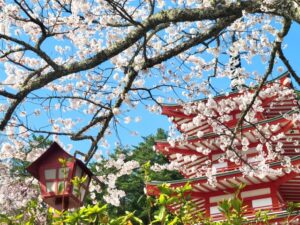Article Body
Introduction
Embrace the Flavors of Each Season with Japanese Cuisine
Japanese cuisine is deeply connected to the changing seasons, and every season brings its own unique set of ingredients, dishes, and traditions. Through cooking experiences, you can discover how Japan’s culinary practices reflect the beauty of the natural world, offering a fresh, seasonal perspective. In this article, we will explore the seasonal dishes in Japan and the cultural significance behind them, as well as the special events and festivals that accompany these culinary celebrations.
Spring: A Season of Renewal and Freshness

Savor the Delicate Flavors of Spring
Spring in Japan is a time of renewal and celebration, and the season’s cuisine reflects this sense of freshness and new beginnings. During this time, dishes featuring sakura (cherry blossoms), fuki (butterbur), and takenoko (bamboo shoots) are especially popular. These ingredients symbolize the changing of the seasons and are prized for their delicate flavors and textures. Festivals like Hanami (cherry blossom viewing) often feature seasonal foods such as sakura mochi (sweet rice cakes wrapped in cherry leaves), making it a perfect time to enjoy Japan’s rich seasonal offerings.
Summer: Bright and Refreshing Flavors

Cool Down with Summer Dishes
As the temperature rises, Japanese cuisine embraces cool, refreshing dishes designed to beat the summer heat. Soba (buckwheat noodles) served cold, kaiseki (traditional multi-course meals), and sushi are popular summer options. Aisukurīmu (ice cream) and kakigōri (shaved ice with syrup) are also favorite treats during this time. The flavor of the season is light, refreshing, and designed to cool you down, with a focus on cooling ingredients such as cucumbers, summer melons, and cold tofu.
Autumn: A Bounty of Harvest and Warmth

Warm Up with Autumn Dishes
Autumn brings cooler temperatures and an abundance of seasonal ingredients. It’s a time to savor the flavors of kabocha (Japanese pumpkin), matsutake (pine mushrooms), and tarō (Japanese root vegetables). In autumn, you will often find nabe (hot pot dishes) making their way to tables, bringing families and friends together for warm, comforting meals. Special events like Tsukimi (moon-viewing) also coincide with this season, where traditional foods like tsukimi dango (rice dumplings) are enjoyed under the full moon.
Winter: Hearty Dishes to Keep You Warm

Embrace the Comfort of Winter Cuisine
Winter in Japan is a time for hearty, warming dishes that are perfect for cold weather. Oden (a type of hot pot), yudofu (tofu hot pot), and nikujaga (meat and potato stew) are popular dishes that warm the body and soul. Winter cuisine also emphasizes comfort foods like zōni (mochi soup) eaten during the New Year, and the rich, hearty flavors of nabe (hot pot). Winter is the season of indulgence, and Japanese cooking showcases comforting flavors that bring warmth to family gatherings and celebrations.
Conclusion
A Year-Round Culinary Journey
Each season in Japan offers a unique culinary experience, from the fresh, delicate flavors of spring to the hearty, warming dishes of winter. The seasonal ingredients and the traditions associated with them provide an authentic way to connect with Japan’s rich culture. By taking part in Japanese cooking lessons, you’ll not only learn to cook these seasonal dishes but also gain a deeper understanding of their cultural significance. Celebrate the seasons of Japan and immerse yourself in its culinary traditions through the joy of cooking.
